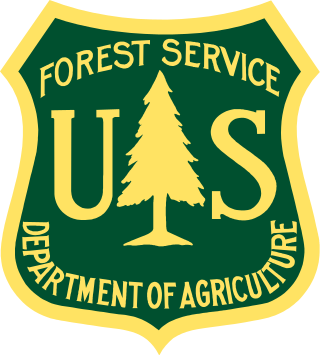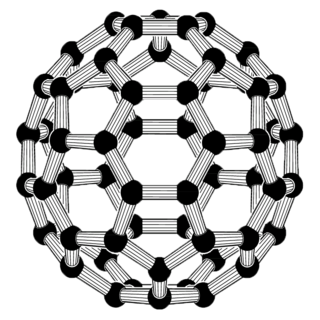Microtechnology deals with technology whose features have dimensions of the order of one micrometre. It focuses on physical and chemical processes as well as the production or manipulation of structures with one-micrometre magnitude.
Defence Research and Development Canada is a special operating agency of the Department of National Defence (DND), whose purpose is to provide the Canadian Armed Forces (CAF), other government departments, and public safety and national security communities with knowledge and technology.
Acoustic emission (AE) is the phenomenon of radiation of acoustic (elastic) waves in solids that occurs when a material undergoes irreversible changes in its internal structure, for example as a result of crack formation or plastic deformation due to aging, temperature gradients, or external mechanical forces.

The Forest Products Laboratory (FPL) is the national research laboratory of the United States Forest Service, which is part of USDA. Since its opening in 1910, the FPL has provided scientific research on wood, wood products and their commercial uses in partnership with academia, industry, tribal, state, local and other government agencies. The laboratory is headquartered in Madison, Wisconsin. The focus of the Forest Products Laboratory is to promote healthy forests and forest-based economies through the efficient, sustainable use of the Nation's wood resources.

The U.S. Army Combat Capabilities Development Command Army Research Laboratory is the U.S. Army's foundational research laboratory. ARL is headquartered at the Adelphi Laboratory Center (ALC) in Adelphi, Maryland. Its largest single site is at Aberdeen Proving Ground, Maryland. Other major ARL locations include Research Triangle Park, North Carolina, White Sands Missile Range, New Mexico, Graces Quarters, Maryland, and NASA's Glenn Research Center, Ohio and Langley Research Center, Virginia. ARL also has regional sites in Playa Vista, California, Chicago, Austin, TX, and Boston.
The School of Engineering and Applied Science (SEAS) at the George Washington University in Washington, D.C. is a technical school which specializes in engineering, technology, communications, and transportation. The school is located on the main campus of the George Washington University and offers both undergraduate and graduate programs.

Carbon nanotubes (CNTs) are cylinders of one or more layers of graphene (lattice). Diameters of single-walled carbon nanotubes (SWNTs) and multi-walled carbon nanotubes (MWNTs) are typically 0.8 to 2 nm and 5 to 20 nm, respectively, although MWNT diameters can exceed 100 nm. CNT lengths range from less than 100 nm to 0.5 m.

Hexcel Corporation is an American public industrial materials company, based in Stamford, Connecticut. The company develops and manufactures structural materials. Hexcel was formed from the combination of California Reinforced Plastics, Ciba Composites and Hercules Composites Products Division. The company sells its products in commercial, military and recreational markets for use in commercial and military aircraft, space launch vehicles and satellites, wind turbine blades, sports equipment and automotive products. Hexcel works with Airbus Group, The Boeing Company, and others. Since 1980, the firm has publicly traded on the New York Stock Exchange under the ticker symbol HXL.

MTS Systems Corporation (MTS) is a global supplier of test systems and industrial position sensors. The company provides test and measurement products to determine the performance and reliability of vehicles, aircraft, civil structures, biomedical materials and devices and raw materials. Examples of MTS products include: aerodynamics simulators, seismic simulators, load frames, hydraulic actuators and sensors. The company operates in two divisions: Test and Sensors.

Zyvex Technologies is a molecular engineering company headquartered in Columbus, Ohio. Zyvex Technologies focuses on developing advanced materials, including prepreg, epoxy resins, and adhesives.
In materials science, advanced composite materials (ACMs) are materials that are generally characterized by unusually high strength fibres with unusually high stiffness, or modulus of elasticity characteristics, compared to other materials, while bound together by weaker matrices. These are termed "advanced composite materials" in comparison to the composite materials commonly in use such as reinforced concrete, or even concrete itself. The high strength fibers are also low density while occupying a large fraction of the volume.

Aerospace materials are materials, frequently metal alloys, that have either been developed for, or have come to prominence through their use for aerospace purposes.
Shuvo Roy is an American scientist and engineer of Southeast Asian descent.
The term "smart structures" is commonly used for structures which have the ability to adapt to environmental conditions according to the design requirements. As a rule, the adjustments are designed and performed in order to increase the efficiency or safety of the structure. Combining "smart structures" with the "sophistication" achieved in materials science, information technology, measurement science, sensors, actuators, signal processing, nanotechnology, cybernetics, artificial intelligence, and biomimetics, one can talk about Smart Intelligent Structures. In other words, structures which are able to sense their environment, self-diagnose their condition and adapt in such a way so as to make the design more useful and efficient.
High Strain Composite Structures (HSC Structures) are a class of composite material structures designed to perform in a high deformation setting. High strain composite structures transition from one shape to another upon the application of external forces. A single HSC Structure component is designed to transition between at least two, but often more, dramatically different shapes. At least one of the shapes is designed to function as a structure which can support external loads.

The Advanced Structures and Composites Center is an independent research unit at the University of Maine that provides research, education, and economic development encompassing material sciences, manufacturing and engineering of composites and structures.
The Automobili Lamborghini Advanced Composite Structures Laboratory (ACSL), commonly referred to as the Lamborghini Lab, was a research and development facility based in Seattle, Washington from 2007 to 2018, which focused on the development of carbon fiber composite technologies for Automobili Lamborghini S.p.A. The ACSL also designed and developed carbon fiber products for other organizations in other industries. The hallmark technology pioneered by the Lamborghini Lab is the forged composite technology.

Paolo Feraboli is a carbon fiber technology inventor and businessman. He is the founder and CTO of Gemini Composites, LLC, a wholly owned subsidiary of Mitsubishi Chemical Carbon Fiber and Composites, and founder and former Director of the Automobili Lamborghini Advanced Composite Structures Laboratory (ACSL). He is known for having invented the Forged Composite technology, and his contributions to the Lamborghini Sesto Elemento and Aventador programs.

Alan Kin-tak Lau is an engineer and academic based in Hong Kong SAR. He is the President and Chair Professor of Product Innovation at Technological and Higher Education Institute (Thei) of Hong Kong. Prior to this appointment, he was Pro Vice-Chancellor at Swinburne University of Technology. He is also the Independent Non-Executive Director of King’s Flair International (Holdings) Limited, the International Vice President and Trustee Board member of The Institution of Mechanical Engineers (2014-2019) and an Academic Advisor at Asia University. He was also appointed the Chair of professional accreditation panel for APEC/IPEA for Korea. From 2014 to 2016, he was the Alex Wong/Gigi Wong Endowed Professor in Product Engineering Design at the Hong Kong Polytechnic University (HPKU). Currently, he is a Fellow of European Academy of Sciences and Arts, the European Academy of Sciences. Lau has conducted research in the field of Mechanical Engineering, Aerospace Engineering and Materials Engineering. His work has been focused on aerospace composites, Unmanned aerial vehicle, product design and engineering and bio-composites. Lau is recognized as Australian National Research Leader in Composite Materials 2019, published by The Australian Post. Within the period 2020-2022, he was Director of Oceania Cybersecurity Centre Limited and Stawell Underground Physics Laboratory Company.

Carlos E. S. Cesnik is a Brazilian-American aerospace engineer, academic, and author. He is the Clarence L. (Kelly) Johnson Collegiate Professor of Aerospace Engineering and the founding Director of the Active Aeroelasticity and Structures Research Laboratory at the University of Michigan. He also directs the Airbus-Michigan Center for Aero-Servo-Elasticity of Very Flexible Aircraft (CASE-VFA).










